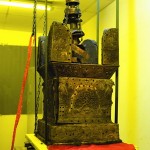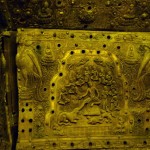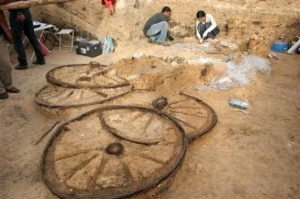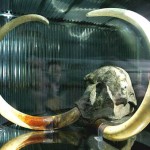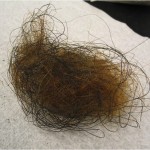 The Lapis Niger is a slab of black marble said to memorialize the spot where the co-founder and first king of Rome, Romulus, was torn to pieces by pissed off senators. (The alternate story is he was assumed whole body into heaven and deified as Quirinus, the spirit of the city itself, but Plutarch and Livy smelled a regicidal rat with that story.)
The Lapis Niger is a slab of black marble said to memorialize the spot where the co-founder and first king of Rome, Romulus, was torn to pieces by pissed off senators. (The alternate story is he was assumed whole body into heaven and deified as Quirinus, the spirit of the city itself, but Plutarch and Livy smelled a regicidal rat with that story.)
It was discovered in 1899 and covered with cement for its own protection in the 50s. Now that cement covering has been damaged by rain, so for the first time in 50 years, people will get a chance to see the Lapis Niger while archaeologists restore it.
A canopy would be erected over the exposed “murder site” – first discovered in 1899 – so that archeologists could work on it while visitors to the Forum watched.
Tourists don’t often get to see archaeologists at work in the city, so that’s a big thing.
For a rivetingly detailed description of the Lapis Niger site from 1906, see Lacus Curtius’ transcription of The Roman Forum by Christian Hülsen.
The awesome bit about all the different things ancient Romans thought the Lapis Niger commemorated is worth reading through the second paragraph at least.
